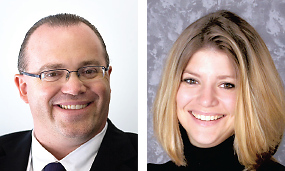The Pharmacotherapy of Maladaptive Aggression in Children

In the June 2012 Pediatrics, two papers were published, one by Knapp and colleagues and the other by Scotto Rosato and colleagues, regarding guidelines for the treatment of maladaptive aggression in young people. When it comes to intervening in youngsters with dysfunctional aggressive behavior, pharmacotherapy may be a treatment option for some patients.
In our opinion, one of the key reasons that guidelines pertaining to maladaptive aggression in young people are so clinically relevant is that medication treatment of this patient group remains controversial. Concerns are raised about whether medications, many of which are associated with significant risks, are not being used to treat a patient in need, but rather being used as either a form of punishment or behavioral control.
Another issue relates to concerns that the practice of treating disruptive behavior is a key driver of the increased rates at which atypical antipsychotics are prescribed to children. Interestingly, a paper published by Findling and colleagues in 2011 in the Journal of Child and Adolescent Psychopharmacology reported that in an epidemiologically ascertained cohort of outpatient children, the only two diagnoses associated with a higher likelihood of being prescribed an antipsychotic were bipolar I disorder (and not bipolar disorder not otherwise specified) and psychotic illnesses. Because the information that was described in that report was collected in a face-to-face manner, and because these results differed from those reported in papers that were based on claims-based sources, the authors recommended that external validation studies be done to confirm or refute the accuracy of data derived from large databases.
Even though more research needs to be done in the field of pediatric psychopharmacology, clinicians are faced with helping their patients who are struggling now. The papers by Knapp and Scotto Rosato highlight approaches that can be useful to clinicians when a child presents with maladaptive aggression. Guidelines regarding both assessment and treatment are included in these papers. Although the topic at hand here is the pharmacotherapy of dysfunctional aggression, we both are of the opinion that the paper by Knapp and colleagues that considers the evaluation processes of these youngsters is as important, if not more so, than the paper on intervention.
We recommend that clinicians who are faced with these challenging patients consider reading both these papers. However, in this column we want to highlight considerations that we believe are particularly salient regarding the pharmacotherapy of dysfunctional aggressive behavior.
The first point we would like to emphasize is that when considering the topic of medication-therapy studies of maladaptive aggression, results pertain to specific groups of well-characterized patients. For that reason, such results might not necessarily be applicable to other patient groups with similar behaviors. Put in other words, although clinical trials data might suggest reduced maladaptive aggression in a certain population of children, that does not necessarily mean that the medication that was considered under the auspices of that clinical trial is effective in the treatment of problematic aggression per se.
In addition, when thinking about starting or continuing a medication trial for a given patient with maladaptive aggressive behavior, it appears to us that the characteristics of the aggressive behavior also matter. One might consider aggression to fall along a spectrum that on one end consists of reactive, emotional, or impulsive aggression and on the other end is characterized by planned and premeditated aggressive acts. Although this topic has not been extensively considered, it appears that only the impulsive and reactive aggressive behaviors are those that are potentially amenable to pharmacotherapy. Parents have told us that medication treatments give their children the ability to “think about what they want to do” rather than simply reacting to their environment without the ability to consider potential consequences.
As mentioned above, atypical antipsychotics appear to be the most commonly prescribed agents in this patient population. However, it should be noted that treatment options that do not include medication and pharmacological treatments from different classes of agents also have evidence to support their use in these vulnerable children.
If one is indeed faced with a youngster with maladaptive aggression for whom pharmacotherapy might be appropriate, selecting a medication that has scientific evidence to support its use is recommended. However, we would also like to highlight that medication dosing matters. And it matters a lot. Treating doses that are too low may be ineffective. Doses that are too high can lead to unnecessarily high rates of side effects. In addition, although final medicine doses do matter, it is important that the correct starting dose is used, and if necessary, the correct rate at which dosing increases occur can also make the difference between a successful and unsuccessful treatment course.
In short, the approach to the pharmacotherapy of maladaptive aggression in children is similar to the one that a clinician might pursue when considering any psychopharmacological treatment for a child. Do a meticulous assessment while ensuring safety. Weigh the therapeutic options. Carefully think about the putative risks and benefits of the medications. But also thoughtfully consider the risks associated with continued dysfunction and suffering versus the possible benefits of symptom amelioration. ■
The Rosato paper is posted at http://pediatrics.aappublications.org/content/129/6.toc; the Knapp paper is posted at http://pediatrics.aappublications.org/content/129/6/e1562.full.



